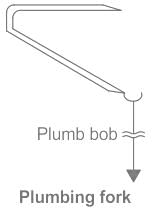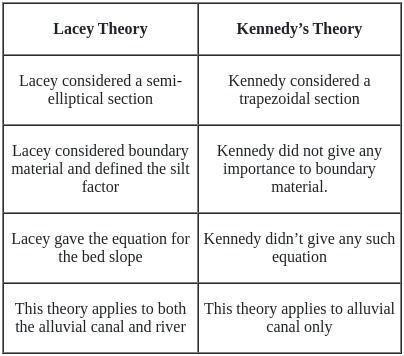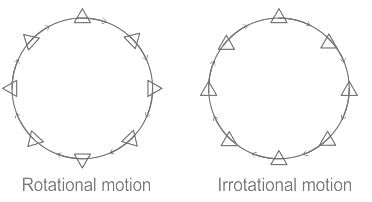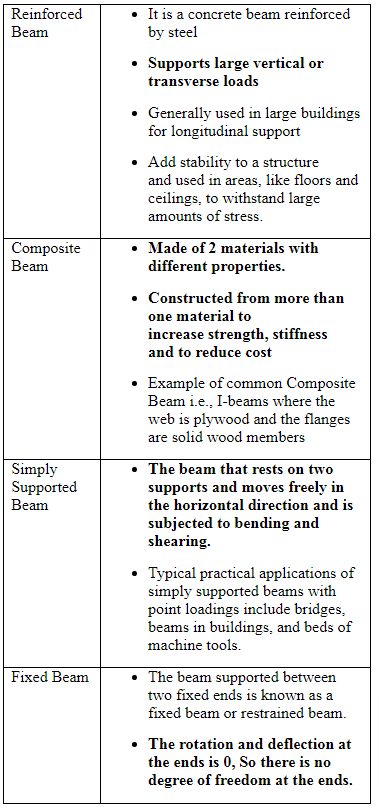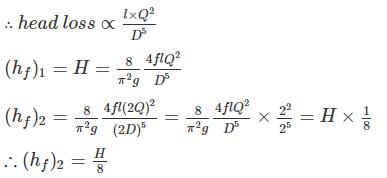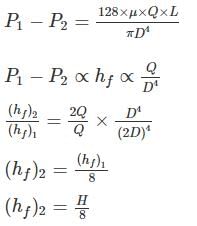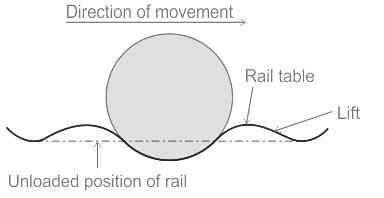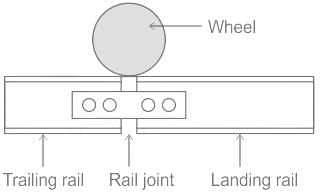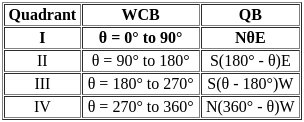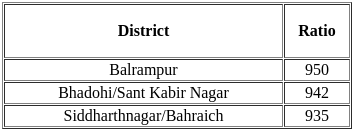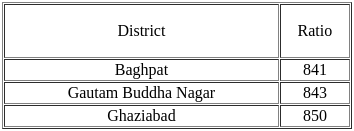UPSSSC JE Civil Mock Test - 6 - Civil Engineering (CE) MCQ
30 Questions MCQ Test - UPSSSC JE Civil Mock Test - 6
Which of the following is NOT the method of estimating building works?
______ is a secondary pollutant causing pollution of air.
Which of the following statements regarding transverse reinforcement in the form of lateral ties provided in the column is true?
For exact centering of plane table, which of the following instrument is used?
Identify whether the given statements with respect to sprinkler irrigation are correct or incorrect.
Statements:
A) Sprinkler irrigation is more suitable than surface methods when the land has very pervious soil and undulated surface profile.
B) Sprinkler irrigation is more suitable than surface methods when the land has steep
Match the following types of beams with their respective functionalities.
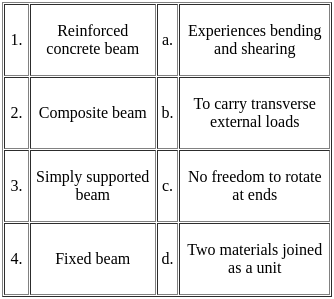
The loss of head in a pipe of certain length carrying a flow rate Q is found to be H. If a pipe of twice the diameter but the same length is to carry a flow rate of 2Q the head loss will be
In Ultimate Load Method, the load used in the design of R.C.C. structures refer to.
Which of the following statements is/are correct with reference to conjugate beams?
Statement A : A conjugate beam is a hypothetical beam with the same dimensions as those of the actual beam but with a different loading configuration.
Statement B : Bending moment at a certain point in a conjugate beam (M conjugate) is equal to the deflection (X real) at that point in a real beam.
A beam consisting of two or more materials rigidly connected to each other preventing any slip between them during bending is called
The WCB of the line is 5π/3 radians. Its quadrantal bearings is:
Which of the following is NOT a programming language?
Which protocol is used for email message between different machines ?
USB 2.0 supports the highest transfer rate of ______.
Options such as File, Edit, View are available in a window on ________.
In 2002, which of the following city in Uttar Pradesh was declared as "Biotechnology City"?
Which of these districts of Uttar Pradesh lies on the UP-Bihar border?
Match list-I with list-II and select the correct answer using the code given below the lists
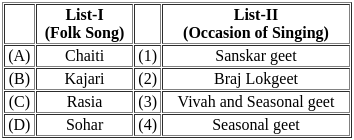
Vindham Waterfall is located in which district of Uttar Pradesh?



